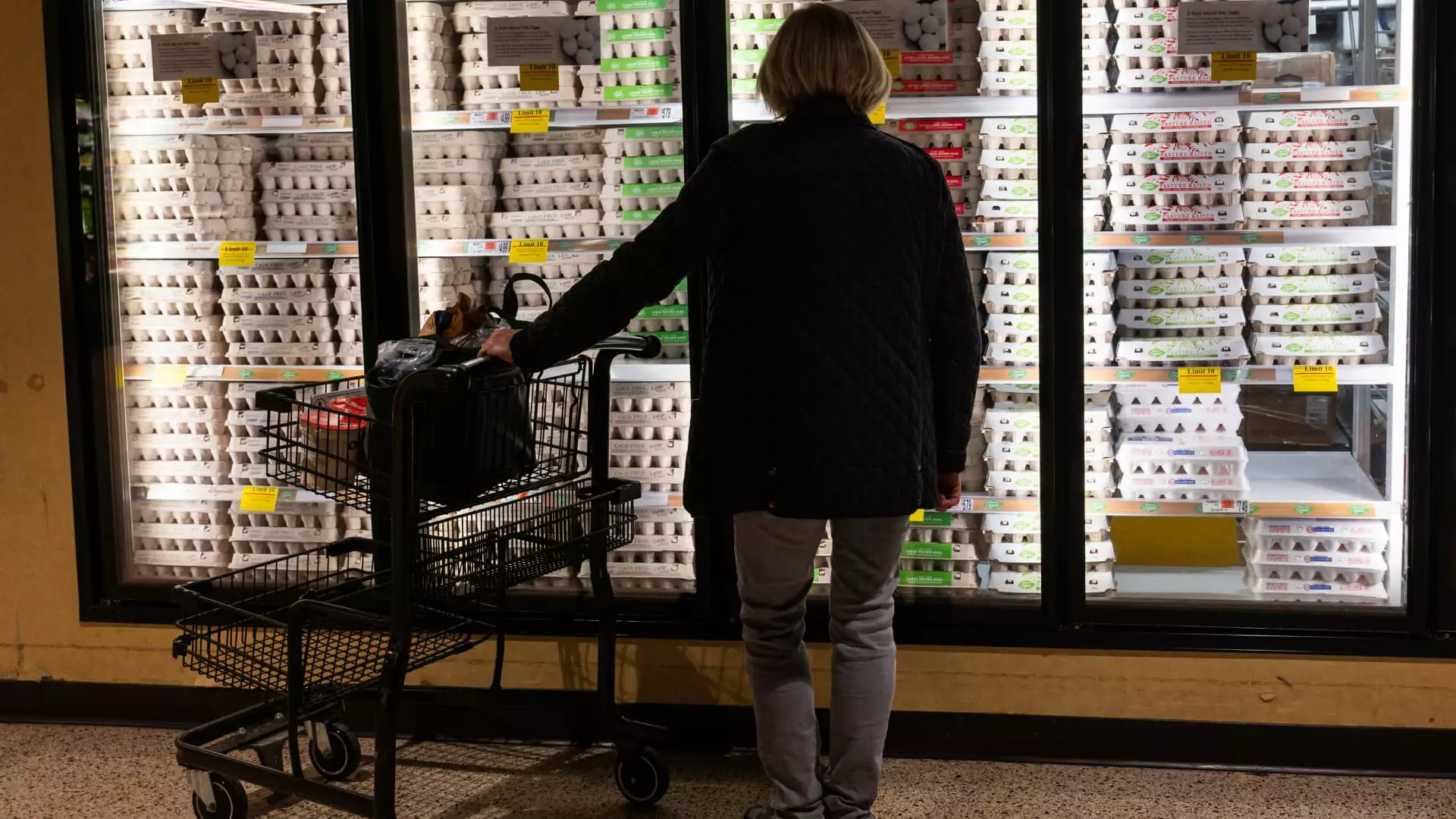In a spectacular twist of fate, wholesale egg prices have plunged by a staggering 44%, dropping to $4.83 per dozen from a nauseating peak of $8.58 per dozen earlier this year. To many consumers scrambling to fill their baskets, this sudden decline might seem like a beacon of hope. However, the underlying complexities of this price fluctuation paint a more intricate picture. While the recent changes signal a potential end to the financial shock of egg shopping, it’s crucial to scrutinize the market dynamics influencing these prices before getting carried away in a celebratory frenzy.
Egg prices reached an all-time high earlier in 2023, exacerbating an already stressful economic environment filled with inflation and rising costs for basic necessities. Caught in this storm were families and individuals who felt the burn of the increased grocery bills, particularly after the devastating impact of bird flu outbreaks decimated a significant portion of egg-laying chickens. Now, as wholesale prices show signs of recovery, one must question the reliability of this reprieve and whether it can sustain itself long-term or is merely a temporary illusion.
The Role of Market Dynamics: An Expert’s Insight
Karyn Rispoli, an insightful egg market analyst, has provided essential commentary on the rapid decline of wholesale prices. According to her analysis, this decrease is partially attributable to improved supply conditions stemming from a reprieve from the bird flu outbreaks. However, the fluctuating nature of consumer demand plays an equally significant role. With households being dissuaded by exorbitant prices, many have reduced their egg purchases, resulting in a gradual easing of supply constraints. This scenario echoes a familiar reality—when consumers anticipate rising prices, panic buying ensues, thereby creating artificial shortages. The current market landscape harkens back to the early Covid-19 days when hoarding became the norm.
This begs the question: are we witnessing an organic stabilization in egg prices, or is this merely a transient drop fueled by atypical consumer behavior? The truth lies hidden beneath layers of anxiety, speculation, and anticipation.
The Concern Over Retail Prices: A Lagging Indicator
Although wholesale prices are experiencing a notable downturn, retail prices have a notorious lag—often taking two to three weeks to adjust. This delay means that consumers, who are still grappling with inflated prices averaging $5.90 per dozen in February, will likely continue to feel the strain in their wallets for a while longer. Amid grocery aisles filled with high price tags, there lies a frustrating reality: our buying habits shift, but the market response is slow and painfully behind.
Moreover, the ways in which retailers choose to respond to wholesale price changes complicate the issue further. While many retailers may choose to stick to their marked-up prices—all in the name of maintaining profit margins—consumers must remain resilient. Until later adjustments are made, households are left to navigate the confusing pricing landscape, clinging to the hope that relief is on the horizon.
Impending Seasonal Demand: A Double-Edged Sword
As we approach the Easter holiday, the anticipated spike in egg demand adds another layer of complexity to the already tricky pricing situation. According to Kevin Bergquist of the Wells Fargo Agri-Food Institute, we could see prices become highly variable as this seasonal demand comes into play. While more people may return to egg-buying sprees in preparation for holiday festivities, this could counteract some of the relief offered by the recent wholesale price drops.
What should consumers do during this unpredictable period? The answer may require a blend of patience, strategic shopping, and financial foresight. Building a relationship with local producers or grocers that can provide transparency about their pricing and practices may offer some assurance that prices are not being artificially inflated, especially as the veil of uncertainty continues to shroud this essential commodity.
In the end, the decline in wholesale egg prices is a glimmer of hope for consumers tired of navigating chaotic markets, but it remains fraught with uncertainties. The real question is whether this apparent decline heralds actual change or serves simply as a reminder of the volatility within the agricultural market. The rollercoaster ride of egg prices is far from over, and consumers must steel themselves for whatever’s next.

